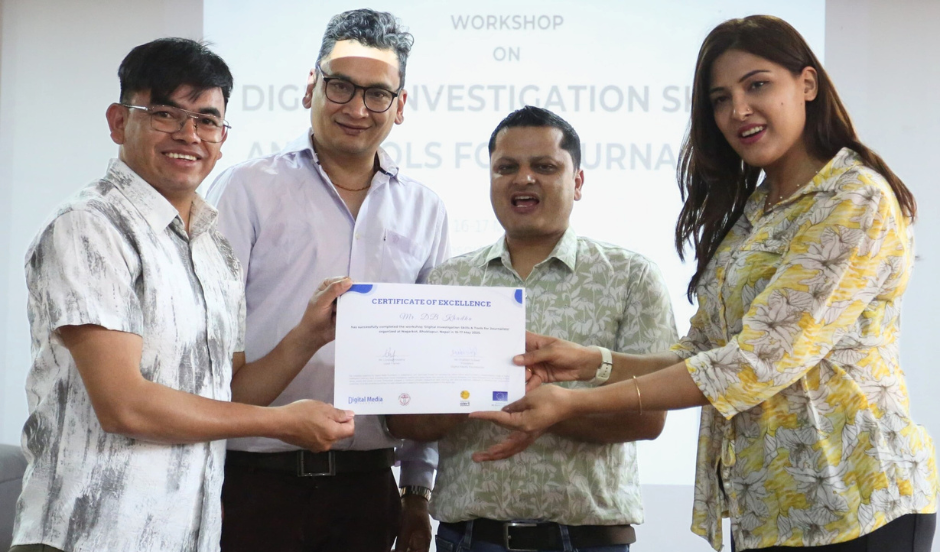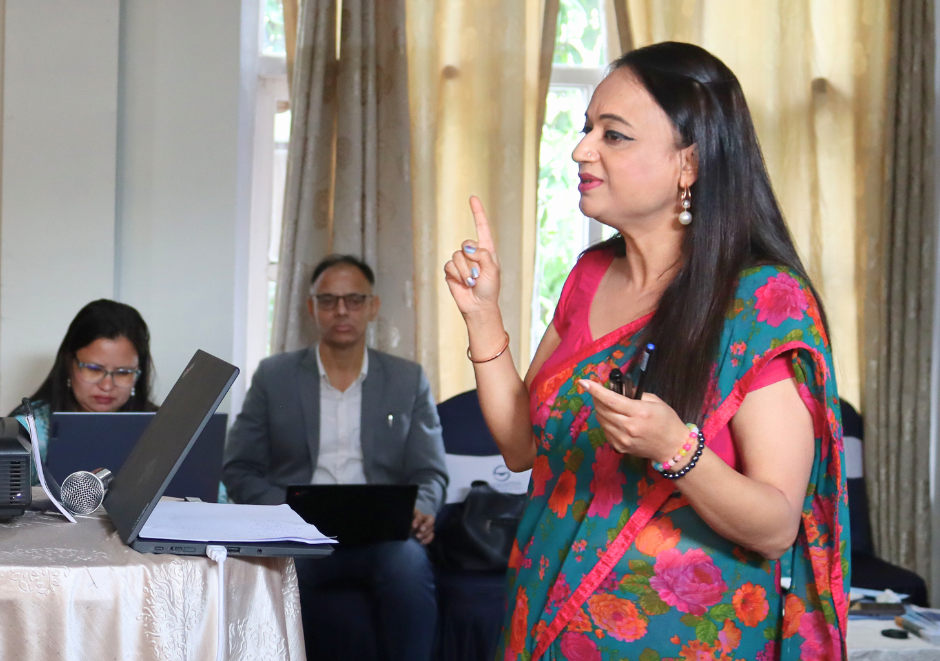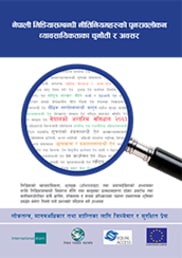"Media can and should reflect the diversity of society": Pratistha Thapa on transforming journalism in conflict contexts
Nepal has experienced significant political transitions in recent decades. Despite governance reforms, deep social divisions persist. We spoke with Pratistha Thapa, Senior Programme Officer from International Alert’s Nepal team, about how responsible journalism and inclusive storytelling can help overcome these challenges and support social cohesion.

What made journalism a priority for peacebuilding work in Nepal?
Pratistha: Imagine that specific communities in a society consistently find themselves shut out of conversations that affect their lives. Their resentment builds, which can lead to tensions and even localised conflict, creating barriers to peaceful coexistence.
In our context, this is still a common experience for women, Dalits, Indigenous peoples, persons with disabilities, and other historically marginalised groups. They remain sidelined in many spheres of public life, including decision-making, and have a deep-rooted mistrust towards local power structures. Unequal access to information, discrimination and the lack of inclusive narratives in public discourse only worsen these dynamics.
What is covered in the media – and how – shapes public perceptions and informs decision-making. Our 12-year partnership with the Federation of Nepali Journalists (FNJ) focused on harnessing this influence to promote peace and social unity.
We’re clear that media can and should reflect the diversity of society and promote mutual accountability.
What issues did this work strive to resolve?
Pratistha: One significant issue within this context was the lack of representation of marginalised voices in media content and leadership. Tackling it has proven challenging due to institutional resistance, political influence, commercial pressure, social hierarchies, and a general lack of training and awareness among journalists.
Within the media industry itself, we also identified additional challenges related to safety and security around independent reporting in sensitive contexts, as well as low morale and high turnover caused by unequal pay and benefits. Capacity and skills for ethical, gender-sensitive, and culturally appropriate journalism remained limited.
Can you walk us through your specific methodology for achieving change in newsrooms?
Pratistha: We used three crucial components: dialogue, training, and policy advocacy. For instance, we facilitated forums where local government representatives and civil society groups, particularly those representing marginalised communities, could openly discuss shared concerns and build trust. The Free Media Networks are one example of a platform that collaboratively tackles issues related to the violation of the right to freedom of expression.
Training on conflict and gender sensitivity has equipped journalists with knowledge and skills for more responsible and inclusive reporting. We’ve also worked with both editorial staff and leadership to embed Gender Equality and Social Inclusion (GESI) and safeguarding principles.
Our campaigning efforts with the Minimum Wage Fixation Committee have supported equal pay benefits in media organisations. We also prepared a policy position paper to advocate for the integration of GESI and safeguarding standards beyond the media sector, at both the provincial and federal levels.
Why was focusing on GESI such a critical component of this work? How was it received in the professional community?
Pratistha: Through our work with 11 media outlets, we discovered that most previously lacked GESI and safeguarding policies, which reinforced inequality and eroded trust. Media houses need defined principles and procedures for inclusive practices, both in everyday newsroom operations and internal governance.
It’s not about ‘ticking the boxes’. Responsible journalism, which reflects the realities and aspirations of all segments of society, requires clear, established systems.
Our training approach encouraged personal reflection through case studies, while emphasising practical implementation steps, and gradually shifted initial resistance into a commitment to change.

What concrete changes have you observed in how these 11 media houses now operate?
Pratistha: All media houses we’ve worked with now have formal GESI and safeguarding policies that shape their internal work culture and approaches to covering diverse communities. Trainings on responsible reporting and journalists’ rights strengthened fact-checking practices and helped media professionals better protect their freedom of expression.
Mindsets are changing, too. Participating journalists recognise the impact of their reporting on communities and now feel more confident in amplifying diverse voices and challenging harmful narratives. What I find most striking is how our efforts empowered journalists from marginalised backgrounds.
Take one powerful story: A journalist with a disability and 17 years of experience had rarely felt seen and heard in his work. After our GESI training, he gained the confidence to advocate for his rights. He’s now a senior community radio staff, serves on FNJ’s executive committee, and leads by example – giving a platform to other marginalised voices in his reporting.
How big of a difference does this work make for the overall stability of society ?
Pratistha: I believe this work helped us build trust and credibility of the media. It has also enhanced freedom of expression and pluralism, which have been instrumental in supporting a peaceful democratic transition in our society.
When media are strong, inclusive, transparent and accountable, government responsiveness and accountability increase. Public discourse and policy-making become more representative of everyone’s lived realities, not just those in positions of power. There’s more space for communities and citizens to recognise their shared interests, participate in public life more actively and co-create solutions for lasting peace and stability.
Where does this work need to go next? What are your hopes for its future?
Pratistha: Our goal is clear: a media ecosystem where responsible, inclusive journalism isn’t an add-on but the standard. This requires continuous capacity building, including for journalists from marginalised communities, and reinforcing policies that promote equality, safety, and fair treatment. Enhanced collaboration among media, civil society, and government is also essential.
Our work with the media in Nepal has been made possible through our partnership with the Federation of Nepali Journalists and the financial assistance of the European Union via the European Instrument for Democracy and Human Rights (EIDHR).







